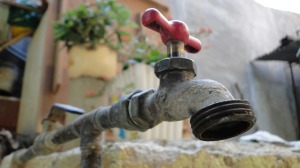New Era of Conflict: Water Shortages in Costa Rica
In 2012, U.S Intelligence agencies predicted that droughts, floods, and a lack of fresh water may cause significant global instability and conflict in the coming decades. Water shortage may be coming far sooner than expected, as this past week communal fights and protests over water have proliferated in Costa Rica, where 25% of the country is living under a drought. 99% of the urban population is connected to water supply systems, but water production capacity in Costa Rica is barely equal to current demand, meaning that as population rises, so does the risk of facing a water deficit.

One of the regions facing the most severe droughts is Atenas, a canton or second-level administrative division of Costa Rica, located on the western edge of the Central Valley. For months there have been constant water shortages in the region, affecting over 60% of the population. Roughly 21,000 Atenas residents were forced to adapt to living with just three hours of water per day. The lack of water has even led public schools to regularly suspend classes. Though the problem has intensified in the past few months, water shortages are no news for Atenas. In fact, former president Laura Chinchilla (2010-2014) was once forced to declare a health emergency to deal with Atenas’ water shortages. As a result of the ongoing problem, Atenas started protesting against the government in early October, demanding a solution to constant water shortages.
Government proposed a $5.6 million plan to pipe water from neighboring city Tacares. Concerned about their future access to water, Tacares residents proceeded to blockade the contractor behind the project, making it impossible to move machinery to the area and begin work on the project. Costa Ricans seem to be stuck in a zero-sum game where water can only be yielded to one’s neighbors at the expense of one’s own water supply.
This past week, the conflict reached a high point when protestors from Tacares clashed with anti-riot police.
The President of Costa Rica, Luis Guillermo Solís voiced concerns that communities in Costa Rica are trying to grab resources for themselves and refuse to release them even when fellow communities really need them. Favoring a more collaborative solution between Atenas and Tacares, President Solís said “We have to find a way to share a sense of solidarity.” As of now, no solution has been proposed to resolve the two cities’ dispute, leaving the outcome of the conflict up in the air.
Though Costa Rica has more water per capita than most countries in the world, the precious liquid is poorly managed and distributed irregularly. It seems like the only means to maintaining domestic integrity in the face of these water shortages is for government to revise water management and distribution among each province of Costa Rica. One viable solution would be distributing water based on the amount of people and arable land in the province. This move would likely hurt the tourist industry since resorts depend on abundant water sources for maintaining golf courses, filling pools, and providing showers for guests, but it would stabilize the country by reducing the severity of water shortages in many parts of the country. While tourism is an important industry for Costa Rica, accounting for over 12.5% of Costa Rica’s GDP, domestic cohesion and the peaceful living conditions are prerequisites for a successful tourist industry—and for a successful rule of law.
